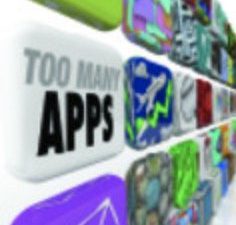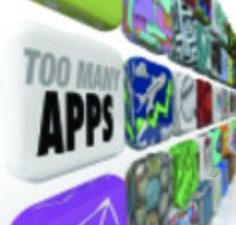Connecting the bots
March 31, 2017


At the latest annual Phocuswright gathering, held last November in Los Angeles, the buzzword hanging over the panels like a headache was “app fatigue.” The new term describes what every traveler feels while scrolling their smartphone for information on the right seat, the level of rewards points, whether there is a better flight to book or the location of the nearest Starbucks, usually in a mad dash for the departure gate.
App fatigue was spreading fast at this conference – which showcases the latest smartphone travel applications for companies that are hoping to become the next big must-have app for travelers. As pitch upon pitch was presented in front of variously configured “Shark Tank” panels on a wide stage, a collective coma seemed to overtake the audience.
“It’s crazy out there but no doubt these apps have greatly improved the travel experience,” says Lorraine Sileo, senior vice president of research at Phocuswright. “Many things are out of your control when you are traveling – travel disruptions, uncomfortable airline seats, hotel problems, getting around. But these emerging technologies give the traveler more control – and a sense of control – and even the ability to be more proactive during their trip.”
It’s Complicated
Indeed, being a connected traveler has become evermore complicated even over the past five years. Travel app choices just a few years ago were more focused on basics: flight times, planning in advance, static information such as airline seat configurations, and places to store personal rewards points information.
Today, it is possible for an app to anticipate a weather problem and flight cancellation and have another flight booked for you before you look up and see snow. You can find the closest food concession to your gate, order ahead of time and pick up the meal on the way to the plane. Need to put together a meeting on the fly? There are apps that will instantly scout the target city for an open boardroom and book it for you.
“The whole concept of this business has been about how to attract browsers and convert them to buyers and that means apps have to shift and mutate according to how people behave,” says Jean Noel Lau Keng Lun, senior director global product marketing for Egencia, which is now part of Expedia. “So the bar for apps is now set to a level of expectation that the technology has to be as good inside a smartphone as it for everyday life on the desktop or telephone. Many companies believe travelers need to adjust to their company’s style of how the technology should flow. Clicks don’t lie, though. We try to make sure that every time someone hits the app the experience is good.”
The Egencia app, which works to keep travelers in the flow, often with quick access to agents when needed, gets mixed reviews for expedience and usability on the app site. And such performance is not unusual in a context where perfection is expected for a technology that has as its aim to funnel so many demands and factors into a single source point.
Connecting and Collecting
“There is no doubt about it. The landscape is quite fragmented when it comes to itinerary management,” says Sileo. “Unless you use a travel management company for all your travel it is pretty problematic and still has not been resolved. Many apps do not integrate into loyalty programs or expense management, for instance. And let’s face it, travelers usually only keep a few favorite travel apps on their screen.”
For travelers trying to keep a log of their expenses, unless they are working inside a travel management program, such as Amadeus e-Travel or Carlson Wagonlit’s CWT To Go, they will have a somewhat broken experience trying to keep all elements in one place. Companies, such as Expensify, that are easy to use recorders of itinerary expenses, operate on a scanning system. An OCR is able to integrate data with such software as QuickBooks. Still, it gets mixed ratings from users, who find it sluggish and buggy but believe it may the best of an underserved platform for now.
“Expense reports? These always need to link to itinerary but that is so hard as it must be so detailed,” says Lau Keng Lun. “We are working on the ability to capture the receipt at moment of execution within trip, as we have done for Uber transactions. What you see on the market today for this function, however, looks more like1980 processing – linking expenses on a spreadsheet and then attaching receipts. That is what most business travelers are still doing.”
Tim MacDonald, Executive Vice President of Global Products for Concur agrees fragmentation is still a problem for the connected traveler. To give you a sense of the complexity, consider this: On a busy day, Concur will see some 39,000 expense reports coming in through mobile alone, MacDonald notes.
Emerging trends and innovative technologies are disrupting traditional methods of business travel and booking directly through airline, hotel or other providers is a great example. According to a recent Global Business Travel Association study, direct booking habits continue to increase and yet many companies haven’t employed the appropriate tools to pull this spend into their managed travel programs.
To that end, Concur’s TripLink allows travelers to book directly with suppliers – a benefit most travelers demand – and is still able to capture the activity in one spot. Partnerships with major travel suppliers like IHG, Marriott, Starwood, United and others give companies visibility in this area of growing spend, MacDonald says.
Itineraries and plans are then further funneled into TripIt Pro, which organizes travel plans in one place and provides real-time updates such as flight delays or cancellations. TripIt Pro also brings trip data into the company’s travel program to make the spend on direct bookings more visible.
Rogue Warriors
Concur started working with what have been tabbed “the disrupters” – Airbnb and Uber – over the past few years to bring these in-demand services for travelers into the mainstream for business travelers. An app released just this year called “Concur Bot for Slack,” allows employees to simply type in a command, such as “expense $5 to Uber,” and the expensed item will be processed at Concur.
Similarly, Airbnb has partnerships in place with Concur, as well as with American Express Global Business Travel, BCD, and Carlson Wagonlit Travel to make bookings and capture easier on the road. End users work through “Business Travel Ready” listings, which integrate needed travel management tools into the record.
As today’s software becomes more adept at connecting business travelers with the right outcomes, end user apps of tomorrow are moving toward creating a truly one-of-a-kind travel experience for each traveler’s individual needs.
“For instance, there are interesting applications that will actually automatically rebook you into a less expensive comparable hotel than the one you may have booked. Another app is called Upside, created by one of founders of Priceline. In this app they reward you based on your savings. Another nextgen metasite, Hopper, helps you find the best time to fly and best time to buy,” Sileo explains.
“Every business traveler has a phone and relies on apps and these are usually quite personalized now. This is not something we were seeing five years ago,” notes Sileo. “At that time we were just using phones for communication, weather, and maybe simple bookings. Now you can find just about everything – the best cheeseburger at the airport, the location of the gate, the shortest line for coffee, even the shortest lines for security.”
Social Influence
Most apps for travelers now feature some element of social media and this is something getting more and more integrated into mainstream applications and systems.
“If you are sharing your trip on Facebook and just writing about how you’re going to Dallas that day, if it is just sharing for no purpose, that can be a bad thing,” adds Lau Keng Lun. “But we are seeing travelers taking it to the next level and getting valuable advice from colleagues on where to stay and where to eat. We collect this information and can show that in the past 30 days, for instance, five of colleagues stayed where you are staying and recommended this and that. And this information can be of great value to the end user.”
To the extent that apps are not going away and the connected traveler is only getting that much more connected, the apps that will be coming on line for travelers in the future will be much more integrated with the emerging capabilities of artificial intelligence technology. That means apps of the future may know what the traveler wants or needs even before the traveler does.
“We will start to see more automatic pre-booking, for instance,” Sileo predicts. “So my Delta flight has been canceled but I don’t know that because I am still in the air. My app has auto-booked me on next flight, alerted my hotel that I will be needing a late check-in and will make sure the Uber driver I have scheduled knows of my new arrival time,” she says. “All of this is still in the development phase but it is coming.”
By Lark Gould




